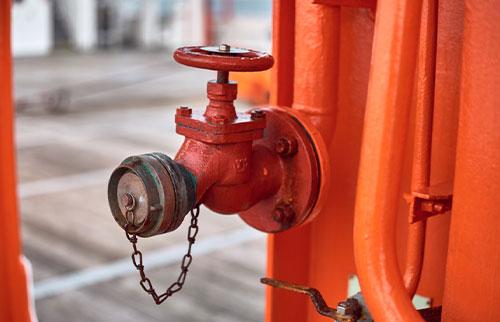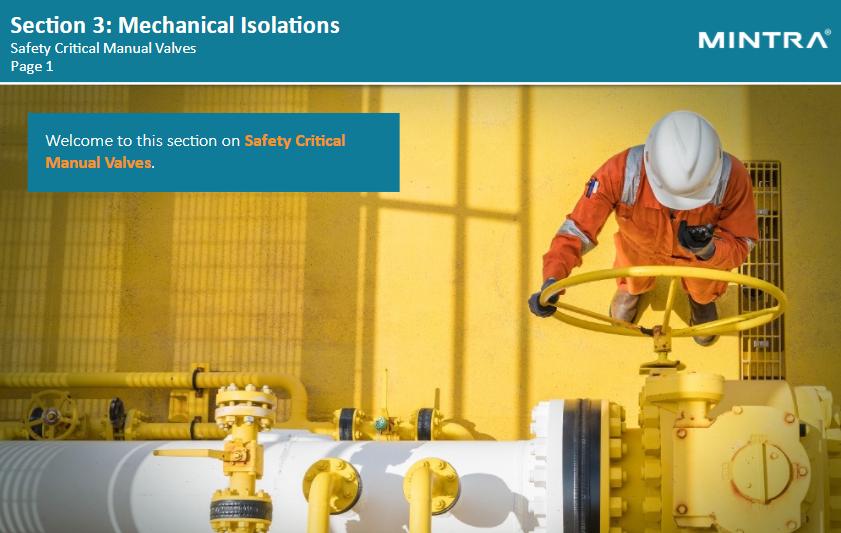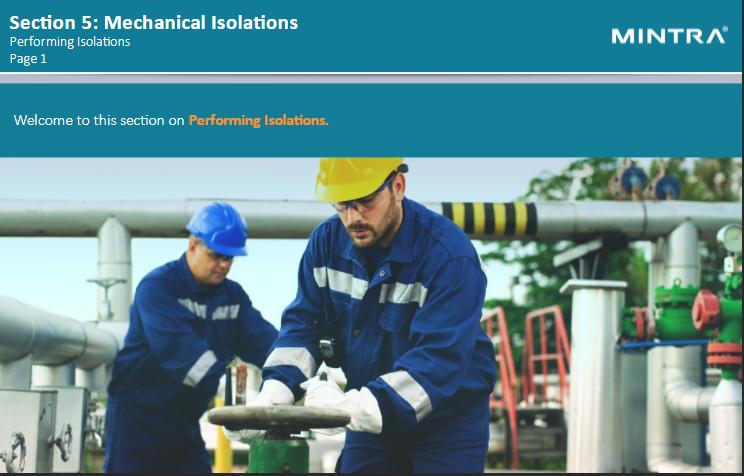Buy and assign to
multiple learners
Instant access
via email link
Instant certificate
via email
Further Information - Mechanical Isolations (Maritime) Training
Description
Who is the course for?
This Mechanical Isolations (Maritime) Training course is suitable for all maintenance personnel on board who are involved in performing isolations.
Is previous experience required?
No previous experience is required to complete this course.
How will the course benefit me?
This course will give learners an overview of how to use mechanical isolations to ensure safe working.
How will the course benefit my company?
The course will ensure that the risk to personnel working on the various systems on board the ship are reduced by the use of mechanical isolations.
What standards are referenced in the course?
This course does not refer to specific legislation or standards.
Is there an assessment?
Once you have completed the course, you will be asked a series of questions to check your knowledge and understanding. These are based on the learning objectives for the course and have a pass mark of 70%.
Learning Objectives
Learning Objectives and Course Sections:
1. Introduction to Mechanical Isolations
• Explain the purpose and scope of best practice procedures in relation to mechanical isolations
• Identify common isolation terms
• Identify commonly used valves
2. Roles and Responsibilities
• Identify key isolation roles and responsibilities
3. Safety Critical Manual Valves
• Identify common Safety Critical Manual Valves
• Explain how Safety Critical Manual Valves are secured and controlled
• Identify environmentally critical valves
• Explain the considerations that must be taken when planning isolation work
4. Planning Isolations
• Understand the planning requirements for isolation work
• Outline the information that should be included on an Isolation Confirmation Certificate (ICC)
• Identify the three main methods of isolation
• Outline the requirements for personal isolations
• Explain the importance of P&IDs and identify the main symbols
• Explain how to use a Pressure Gauge Range Table
• Explain how to select the best method of isolation
• Explain the requirements for carrying out an Isolation Risk Assessment
5. Performing Isolations
• Explain the safe use of bleed valves
• Outline the requirements for isolations during confined space entry work
• Outline the requirements for boundary isolations
• Outline the requirements for retained and mothball isolations
• Give examples of the implementation of each of the main methods of isolation
• Explain the requirements for valve integrity testing
• Identify appropriate contingency planning
6. Isolation Security
• Explain the requirements for lockout boxes
• Identify commonly used isolation tags
• Explain how to ensure isolation security
• Identify alternative methods of locking isolations and ensuring security
7. HP/LP Systems
• Explain what is meant by HP/LP interfaces
• Explain how to recognise HP/LP interfaces and identify where they occur
• Identify when HP/LP incidents occur
• Give examples of HP/LP interface control measures
8. Reinstatement
• Explain the procedures for the de-isolation equipment (including leak and pressure testing)
• Explain the purpose of carrying out ‘strength tests’
• Identify the different types of pressure tests
• Identify the steps required for safe reinstatement
• Give examples of incidents that have occurred as a result of improper isolation techniques
Assessment
End of course assessment with a 70% pass mark and two attempts.
System Requirements
• Internet access - users will need a device with a web browser and internet connection
• System - runs on computers, tablets and mobile devices using Windows 7 and above and MAC OS devices running IOS 11 and above
• Browsers - Edge, Chrome, Firefox and Safari
• Minimum browser size - none
• Audio - requires device speaker or headphones
Recommended Courses
Reviews
Insights & News
At Mintra, we're so much more than just a team—we're a force driving innovation and excellence in maritime training across Europe.
We’re excited to be taking the stage at one of Europe’s leading showcases of organisational learning.
We are delighted to share the exciting news that our People and Culture team has been shortlisted for the prestigious cHeRries Awards!




